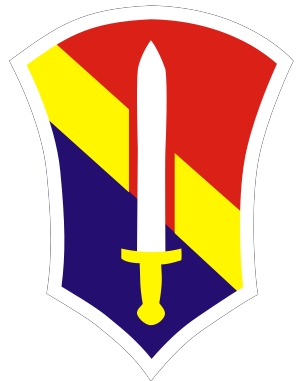
The 101st Airborne Division is a light infantry division of the United States Army that specializes in air assault operations. It can plan, coordinate, and execute multiple battalion-size air assault operations to seize terrain. These operations can be conducted by mobile teams covering large distances, fighting behind enemy lines, and working in austere environments with limited or degraded infrastructure. Its unique battlefield mobility and high level of training have kept it in the vanguard of U.S. land combat forces in recent conflicts: for example, foreign internal defense and counterterrorism operations in Iraq, in Afghanistan, and in Syria, as part of Operation Inherent Resolve.

The 82nd Airborne Division is an airborne infantry division of the United States Army specializing in parachute assault operations into denied areas with a U.S. Department of Defense requirement to "respond to crisis contingencies anywhere in the world within 18 hours". Based at Fort Bragg, North Carolina, the 82nd Airborne Division is part of the XVIII Airborne Corps. The 82nd Airborne Division is the U.S. Army's most strategically mobile division.
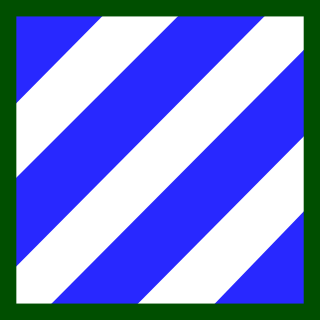
The 3rd Infantry Division is a combined arms division of the United States Army based at Fort Stewart, Georgia. It is a direct subordinate unit of the XVIII Airborne Corps and U.S. Army Forces Command. Its current organization includes a division headquarters and headquarters battalion, two armored brigade combat teams, one National Guard infantry brigade combat team, one task force battalion, one aviation brigade, a division artillery, a sustainment brigade and a combat sustainment support battalion along with a maneuver enhancement brigade. The division has a distinguished history, having seen active service in World War I, World War II, the Korean War, Vietnam War, and the Global War on Terror. The Medal of Honor has been awarded to 61 members of the 3rd Infantry Division, making the division the most honored in the Army.

The XVIII Airborne Corps is a corps of the United States Army that has been in existence since 1942 and saw extensive service during World War II. The corps is designed for rapid deployment anywhere in the world and is referred to as "America's Contingency Corps." Its headquarters are at Fort Bragg, North Carolina.

The 1st Infantry Division is a combined arms division of the United States Army, and is the oldest continuously serving division in the Regular Army. It has seen continuous service since its organization in 1917 during World War I. It was officially nicknamed "The Big Red One" after its shoulder patch and is also nicknamed "The Fighting First." The division has also received troop monikers of "The Big Dead One" and "The Bloody First" as puns on the respective officially sanctioned nicknames. It is currently based at Fort Riley, Kansas.

III Corps is a corps of the United States Army headquartered at Fort Hood, Texas. It is a major formation of the United States Army Forces Command.

U.S. Military Assistance Command, Vietnam (MACV) was a joint-service command of the United States Department of Defense.

First Army is the oldest and longest-established field army of the United States Army. It served as a theater army, having seen service in both World War I and World War II, and supplied the US army with soldiers and equipment during the Korean War and the Vietnam war under some of the most famous and distinguished officers of the U.S. Army. It now serves as a mobilization, readiness and training command.

United States Army Forces Command (FORSCOM) is the largest United States Army command. It provides expeditionary, regionally engaged, campaign-capable land forces to combatant commanders. Headquartered at Fort Bragg, North Carolina, FORSCOM consists of more than 750,000 active Army, U.S. Army Reserve, and Army National Guard soldiers. FORSCOM was created on 1 July 1973 from the former Continental Army Command, who in turn supplanted Army Field Forces and Army Ground Forces.
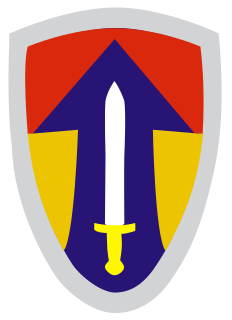
II Field Force, Vietnam was a United States Army Corps-level command during the Vietnam War.

XXIV Corps was a U.S. Army Corps-level command during World War II and the Vietnam War.
The United States Army Regimental System (USARS) was established in 1981 to replace the Combat Arms Regimental System (CARS) to provide each soldier with continuous identification with a single regiment, and to increase a soldier's probability of serving recurring assignments with his or her regiment. The USARS was intended to enhance combat effectiveness by providing the opportunity for a regimental affiliation, thus obtaining some of the benefits of the traditional regimental system.
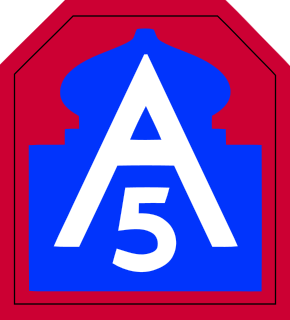
The United States Army North (ARNORTH) is a formation of the United States Army. An Army Service Component Command (ASCC) subordinate to United States Northern Command (NORTHCOM), ARNORTH is the joint force land component of NORTHCOM. ARNORTH is responsible for homeland defense and defense support of civil authorities. ARNORTH is garrisoned at Fort Sam Houston, Texas. Redesignated ARNORTH in 2004, it was first activated in early January 1943 as the United States Fifth Army, under the command of Lieutenant General Mark Wayne Clark.

In the United States (US) Department of Defense, a beret flash is a shield-shaped embroidered cloth that is 2.25 in (5.72 cm) tall and 1.875 in (4.76 cm) wide with a semi–circular base that is attached to a stiffener backing of a military beret. These flashes—a British word for colorful cloth patches attached to military berets—are worn over the left eye with the excess cloth of the beret shaped, folded, and pulled over the right ear giving it a distinctive appearance. The embroidered designs of the Army's beret flashes represent the heraldic colors and patterns of a unit with a unique mission or represent the Army overall. The Air Force's beret flashes represent their Air Force Specialty Code (AFSC) or their assignment to a unit with a unique mission. Joint beret flashes—such as those worn by the Joint Communications Support Element and the Multinational Force and Observers—are worn by all who are assigned, given their uniform regulations allow.

The structure of the United States Army is complex, and can be interpreted in several different ways: active/reserve, operational/administrative, and branches/functional areas.
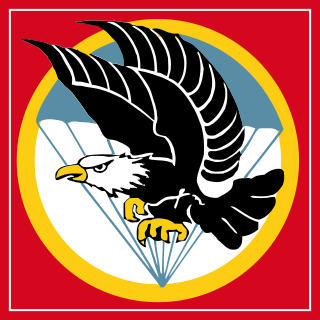
The Vietnamese Airborne Division was one of the earliest components of the Republic of Vietnam Military Forces. The Vietnamese Airborne Division began as companies organized in 1948, prior to any agreement over armed forces in Vietnam. After the partition of Vietnam, it became a part of the Army of the Republic of Vietnam. This division had its distinct origins in French-trained paratrooper battalions, with predecessor battalions participating in major battles including Dien Bien Phu and retained distinct uniforms and regalia. With the formation of an independent republic, the colonial paratroopers were dissolved, however regalia and aesthetics alongside the nickname "Bawouans" would be retained.

The 3rd Battalion, 319th Field Artillery Regiment is the field artillery battalion that directly supports the 1st Brigade Combat Team, 82nd Airborne Division. Known as the "Gun Devils", 3–319th AFAR has participated in battles from World War I to the current day, and is one of the most highly decorated field artillery units in the United States Army. The battalion's mission is "3-319th AFAR stands ready to deploy worldwide within 18 hours of notification, execute a parachute assault and conduct full-spectrum operations. Specifically, the battalion will provide responsive lethal and nonlethal fires in support of forcible entry and airfield seizure, and integrate and synchronize the effects of fires to achieve the 1BCT commander's intent."

The 173rd Airborne Brigade is an airborne infantry brigade combat team (IBCT) of the United States Army based in Vicenza, Italy. It is the United States European Command's conventional airborne strategic response force for Europe.

Chu Lai Base Area is a former U.S. Marine Corps, U.S. Army and Army of the Republic of Vietnam (ARVN) base in Chu Lai in central Vietnam.
Operation Quyet Thang, was a United States Army and Army of the Republic of Vietnam (ARVN) security operation to reestablish South Vietnamese control over the areas immediately around Saigon in the aftermath of the Tet Offensive. The operation started on 11 March 1968 and ended on 7 April 1968.
